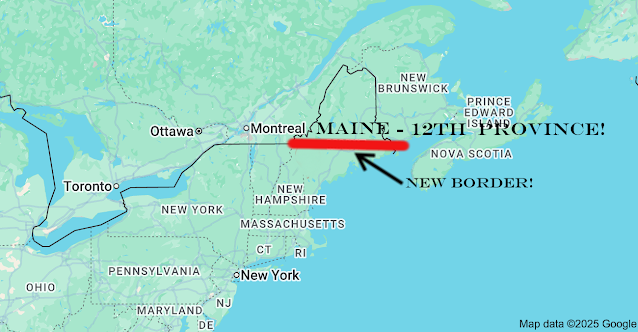Completely removing all trade barriers and tariffs between Canada and the U.S. would be a bold shift—here’s a nuanced look at the advantages and disadvantages of such a move:
✅ Advantages of removing all trade barriers
1. Economic efficiency & consumer gains
-
Without tariffs, the principle of comparative advantage allows each country to specialize, increasing output and overall welfare heritage.org+15en.wikipedia.org+15m.economictimes.com+15.
-
Canadian consumers would benefit from lower prices on U.S. goods (and vice versa), reducing inflation pressures. The Bank of Canada noted that tariff-induced cost increases could significantly feed into consumer prices reuters.com.
2. Boost to trade and growth
-
Canada is the U.S.'s second-largest trading partner, responsible for ~75% of Canadian exports barrons.com+15m.economictimes.com+15facebook.com+15. Removing tariffs could increase export volumes, helping GDP and supporting jobs.
-
The Bank of Canada estimated U.S. tariffs alone could shave 1.1% off Canada’s GDP; elimination would help avert this downside bankofcanada.ca+15m.economictimes.com+15reuters.com+15.
3. Supply chain stability
-
Integrated supply chains—especially in sectors like automobiles, energy, metals—would function more efficiently, boosting competitiveness axios.com+15energypolicy.columbia.edu+15blackbuckinc.com+15.
4. Strengthened bilateral relations
-
A barrier-free regime would ease tensions over digital‑tax and dairy conflicts, reducing retaliatory threats and fostering cooperation.
5. Attracting investment
-
Predictable, open markets are a magnet for investment. Businesses are more confident planning cross‑border operations without trade frictions.
⚠️ Disadvantages and challenges
1. Loss of protected sectors
-
Industries currently shielded—like Canadian dairy, poultry, and eggs under supply‑management—would face intense competition from U.S. producers ft.com+7ft.com+7wsj.com+7en.wikipedia.org.
-
Similarly, U.S. steel, aluminum, and manufacturing sectors could suffer.
2. Adjustment costs
-
Freeing trade could cause short‑term dislocation in sensitive industries, requiring job retraining and social support. While in the long run gains offset these effects, the short‑term pain can be politically challenging en.wikipedia.org.
3. Loss of revenue and policy tools
-
Tariffs currently provide some government revenue and can be used strategically, for example in negotiating digital‑tax concessions. Removing them limits flexibility.
4. Political backlash
-
Sudden liberalization could provoke backlash in regions with vulnerable industries, triggering populist or protectionist pushback (as seen with Trump’s 2025 “Liberation Day” tariffs) theaustralian.com.au+1axios.com+1.
5. Strategic leverage lost
-
Tariffs are a bargaining chip in broader negotiations. Without them, it may be harder to secure concessions on issues like digital services taxation.
🌐 The bigger picture: the USMCA and WTO context
Under USMCA and WTO, most goods already cross tariff-free—exceptions include autos, dairy, steel, and aluminum (where tariffs were imposed in early 2025) ft.com+4apnews.com+4axios.com+4ft.com+3en.wikipedia.org+3en.wikipedia.org+3. Complete removal would likely require treaty renegotiation (e.g., USMCA review due in 2026). However, full free trade would maximize the economic benefits from integrated markets.
🧩 Summary
| Pros | Cons |
|---|---|
| Consumer price relief, inflation control | Disruption to protected and strategic industries |
| GDP growth, trade volume increases | Short-term job losses & adjustment costs |
| Streamlined cross-border supply chains | Loss of policy flexibility and revenue |
| Stronger Canada-U.S. partnership | Potential political backlash |
👥 Is it a “better idea”?
Economically, yes—the consensus among economists favours free trade for its efficiency gains and growth benefits.
Politically and socially, the reality is more complex:
-
You’d need transition policies: training programs, targeted support, and phased liberalization to ease industry adjustment.
-
Negotiating side agreements could protect genuinely vulnerable sectors (e.g., supply‑managed agriculture) while opening others.
-
Both governments must manage domestic political pressures to avoid backlash.
🔄 Bottom line
Removing all trade barriers could unlock significant economic benefits, including stronger growth, lower prices, and deeper integration. But success hinges on managing the inevitable disruptions and crafting compensatory policies to support affected sectors. If both countries are willing to negotiate thoughtfully, a phased, strategic removal could ultimately be a win-win

.jpg)



.png)

.jpg)






















